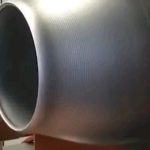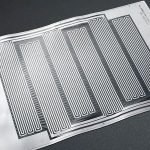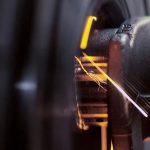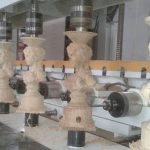There are usually three types of auxiliary gases for laser cutting machines: oxygen, air and nitrogen. Different auxiliary gases are used for cutting different materials.
Depending on the thickness of the cutting material, the pressure and flow of the auxiliary gas are also different, and the gas pressure of the auxiliary gas has a direct impact on the laser cutting effect. The auxiliary gas can blow away the slag in time, cool the workpiece and clean the lens when the laser cutting machine is running.
By choosing different auxiliary gases, the cutting speed and cutting surface quality can also be changed. Common types of auxiliary gases are oxygen, air and nitrogen.
1. Compressed air
The laser cutting machine uses air cutting, which is suitable for cutting aluminum plates, non-metallic and galvanized steel plates. To a certain extent, it can reduce the oxide film and save costs. Generally, it is used when the cutting plate is not relatively thick and the requirements for the cutting end face are not too high.
2. Nitrogen
Nitrogen is an inert gas, and the laser cutting machine uses nitrogen to prevent oxidation of the cutting end face of the product during cutting and prevent burning (it is easy to occur when the sheet is thick. Nitrogen can be selected for products that have high requirements on the cutting end face and are exposed and do not need to be treated. Such as Some decoration industry, aerospace and other special parts;
3. Oxygen
Oxygen mainly plays a role in supporting combustion. The use of oxygen in the laser cutting machine can increase the cutting speed and thicken the cutting thickness. Oxygen is suitable for thick plate cutting, high-speed cutting and very thin plate cutting, such as some large carbon steel plates and some thicker carbon steel plate structural parts, oxygen can be used.
Increasing the gas pressure of the laser cutting machine can increase the cutting speed, but after reaching a maximum value, continuing to increase the gas pressure will cause the cutting speed to drop. Under high auxiliary gas pressure, the reason for the reduction of cutting speed can be attributed to the enhancement of the cooling effect of the laser action area due to the high air flow rate, and the interference of the intermittent shock waves in the air flow to the cooling of the laser action area.
The presence of uneven pressure and temperature in the airflow can cause changes in the density of the airflow field. Such a density gradient results in a change in the refractive index within the field, which interferes with the focusing of the beam energy, resulting in refocusing or beam divergence. This disturbance can affect melting efficiency and can sometimes change the mode structure, resulting in reduced cut quality if the beam diverges too much. If the spot is too large, it will even cause serious consequences of not being able to cut effectively.






